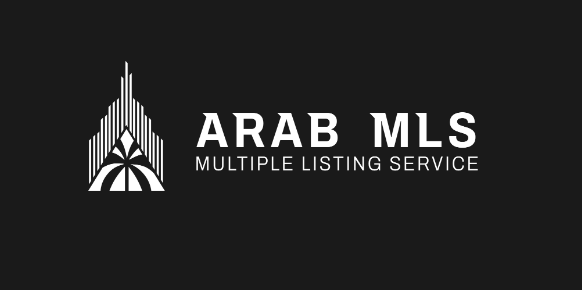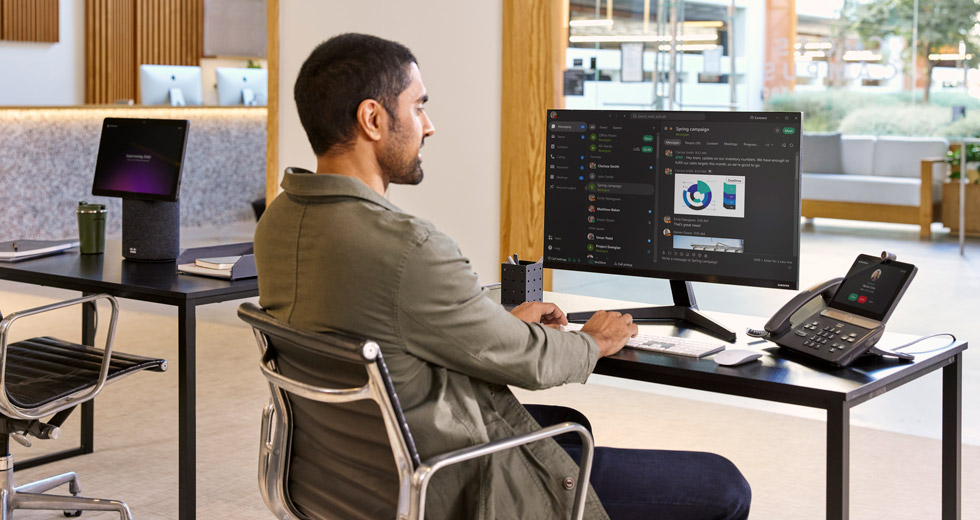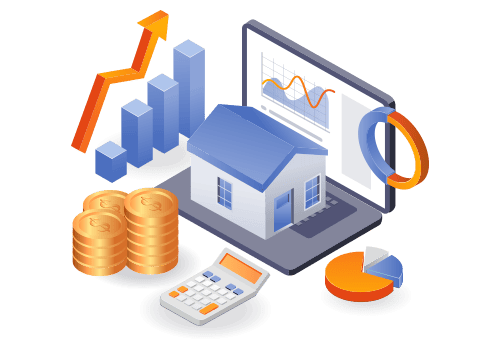The rise of digital nomadism and remote work has dramatically altered the way people approach their living arrangements. Unlike traditional homebuyers who are often tied to a specific city or area due to their work or family commitments, digital nomads and remote workers prioritize flexibility, mobility, and access to community-driven living environments. This shift has created a new demand for MLS (Multiple Listing Service) platforms, which must evolve to cater to the needs of this growing demographic.
Incorporating features that meet the lifestyle needs of remote workers and digital nomads is essential for MLS platforms looking to capture a slice of this emerging market. This article explores how MLS platforms can adapt to the preferences of digital nomads and remote workers, ensuring they are equipped to handle the evolving real estate demands in this new, highly mobile workforce.
Understanding the Needs of Digital Nomads and Remote Workers
Before diving into the specific ways MLS platforms can cater to this audience, it’s essential to understand what makes digital nomads and remote workers unique in terms of their housing needs.
Digital nomads are individuals who use technology to work remotely while living a location-independent lifestyle. This lifestyle allows them to travel freely, choosing where to live based on personal preferences rather than work requirements. Remote workers, while not always as transient as digital nomads, also have the flexibility to work from anywhere.

For both groups, flexibility in rental terms, strong internet connectivity, and community-oriented environments are critical when choosing a place to live.
Some common needs among digital nomads and remote workers include:
- Short-term and flexible rental agreements: Rather than committing to year-long leases, digital nomads and remote workers prefer flexible rental terms that allow them to change locations as needed, often opting for monthly or even weekly rentals.
- Fast, reliable internet: A dependable internet connection is essential for these workers, as it allows them to work from home, join video calls, and complete tasks seamlessly.
- Proximity to coworking spaces: Digital nomads and remote workers often prefer areas with established coworking spaces that allow them to work outside their accommodation, socialize with like-minded individuals, and maintain a work-life balance.
- Community-driven environments: These individuals often seek communities where social interaction is easy, whether through shared living arrangements or access to local events and activities.
By understanding these needs, MLS platforms can create tailored services that make it easier for digital nomads and remote workers to find their ideal properties.
Flexible Rental Options: The Core of the Digital Nomad Lifestyle
The traditional real estate market is geared towards long-term homeowners or those seeking long-term rentals, but digital nomads are not looking for a 12-month lease. Instead, they often seek properties that offer more flexible options.
One way MLS platforms can cater to this need is by focusing on short-term rental options. Listings that offer month-to-month agreements or flexible lease terms will appeal greatly to this audience. MLS platforms can feature these listings prominently, providing filters that allow users to easily search for rentals with flexible lease terms.
Furthermore, furnished accommodations are often a key preference for digital nomads and remote workers, as they do not want to worry about furnishing their home every time they move. Including detailed information about whether a property is furnished or not can help these individuals quickly determine whether a listing is suitable for their needs.
By expanding beyond traditional long-term rental offerings and prioritizing short-term rental listings, MLS platforms can address a significant gap in the market for digital nomads and remote workers.
Highlighting Coworking Spaces and Reliable Internet
A reliable internet connection is arguably the most important factor for digital nomads and remote workers. This demographic relies heavily on their ability to stay connected for work purposes. Whether they are attending virtual meetings, sending emails, or working on large projects, a strong, fast, and consistent internet connection is critical. MLS platforms should therefore include detailed information about internet speeds and availability for each property listing.
Some MLS platforms could also collaborate with internet service providers to include real-time information about the speed and quality of internet connections in specific areas, offering an added layer of detail to the listings. These types of features would be incredibly valuable for remote workers who need to ensure that the property they choose has a robust internet connection that supports their professional activities.
Additionally, proximity to coworking spaces is another key factor that MLS platforms should consider when showcasing listings. Many remote workers and digital nomads prefer to work from coworking spaces to help separate their work environment from their living space. Moreover, coworking spaces offer networking opportunities, access to business resources, and collaboration spaces, all of which are important for the modern remote worker.
MLS platforms can incorporate coworking space proximity as a feature in their search filters, enabling users to find properties close to coworking spaces. Additionally, they could partner with coworking space providers to offer special deals for renters or even provide co-branded listings that highlight both the properties and nearby coworking spaces.
Community and Social Engagement: Building Connections for Remote Workers
While digital nomads and remote workers often value independence, many still crave a sense of community and belonging. Moving to a new city or neighborhood can be isolating, especially when a person is living away from family and friends. To address this, MLS platforms can provide detailed information about the community in which a property is located.
MLS platforms can create a community profile for each neighborhood, showcasing local events, networking opportunities, and amenities that foster social interaction. Whether it’s a local farmers’ market, a music festival, or an outdoor yoga class, sharing information about neighborhood events allows potential renters to better understand the social landscape of an area before committing to a lease.
In addition, MLS platforms can integrate social engagement features where digital nomads can connect with other remote workers in the area. For example, a “community board” or “local forum” could allow users to exchange tips about the area, arrange meetups, or even find potential roommates for shared living spaces.
Another option could be incorporating co-living opportunities. Co-living is a growing trend among digital nomads who prefer a sense of community and shared space while also maintaining independence. MLS platforms can highlight these co-living spaces as viable housing options for remote workers and digital nomads, emphasizing the value of shared living in an area with a community-driven culture.
Integrating Travel Services and Mobility Features
For digital nomads and remote workers, one of the most important aspects of choosing a place to live is its mobility. These individuals tend to move frequently, and access to public transportation or other forms of mobility is a major consideration. MLS platforms can include filters that help users locate properties near public transportation options such as subway stations, bus stops, bike rental hubs, or car-share services.
MLS platforms can also integrate with travel booking platforms to provide users with additional travel-related services. This integration could include flight options, transport details, and even nearby accommodation for those who wish to explore short-term stays in other regions. By collaborating with travel platforms such as Airbnb or Booking.com, MLS platforms can offer extended stay options and provide potential renters with more flexible accommodations.
Including mobility options within property listings not only caters to digital nomads but also helps improve the overall user experience by making it easier to find properties that align with the nomadic lifestyle.
Affordability and Cost of Living
Another important consideration for digital nomads and remote workers is affordability. Many remote workers are freelancers or self-employed, which means their income can fluctuate. To address this, MLS platforms can offer detailed information on the cost of living in various areas, helping users to budget for their lifestyle accordingly.
MLS platforms could go beyond just listing rent prices and incorporate cost-of-living calculators that estimate total monthly expenses, including utilities, groceries, public transport, and leisure activities. This can be incredibly helpful for those planning to live in an area temporarily and want to understand the full financial picture before they commit to a lease.
Additionally, MLS platforms can compare different neighborhoods based on affordability. They can present areas where remote workers can find both affordable housing options and the necessary amenities, helping users make more informed decisions when choosing a place to live.
Enhancing Search Features
Traditional MLS platforms typically focus on specific property features such as the number of bedrooms, square footage, and parking spaces. While these are still important, remote workers and digital nomads have additional needs that go beyond basic property features. To meet these needs, MLS platforms can implement advanced search filters that prioritize:
- High-speed internet
- Proximity to coworking spaces
- Pet-friendly accommodations
- Flexible lease terms
- Community engagement features
- Outdoor spaces and recreational areas
These filters allow digital nomads and remote workers to quickly find properties that meet their specific criteria and ensure they don’t waste time browsing listings that don’t align with their lifestyle preferences.
Conclusion: Adapting to the Needs of the Mobile Workforce
The traditional MLS model has primarily been designed for long-term homebuyers or renters. However, the rise of digital nomads and remote workers has created a new real estate market that demands more flexibility, community-driven environments, and mobility-focused features. By offering flexible rental terms, reliable internet, community engagement opportunities, and integration with travel and mobility services, MLS platforms can cater to the needs of this new workforce.
Adapting to the needs of digital nomads and remote workers is not just an opportunity for MLS platforms; it’s essential for staying relevant in a changing real estate landscape. By embracing these changes, MLS platforms can position themselves as the go-to resource for this growing market, creating new revenue streams and solidifying their role in the future of real estate.













